Fiat Panda vs Land Rover Range Rover – Which model is better for everyday use?
Everyday use, family trips or long-distance drives – here’s where the differences show.
Discover whether Fiat Panda or Land Rover Range Rover fits your lifestyle better.
Costs and Efficiency: Looking at overall running costs, both models reveal some interesting differences in everyday economy.
Fiat Panda has a convincingly advantage in terms of price – it starts at 14100 £, while the Land Rover Range Rover costs 122700 £. That’s a price difference of around 108608 £.
Fuel consumption also shows a difference: Land Rover Range Rover manages with 2.70 L and is therefore convincingly more efficient than the Fiat Panda with 5 L. The difference is about 2.30 L per 100 km.
Engine and Performance: Power, torque and acceleration are the classic benchmarks for car enthusiasts – and here, some clear differences start to show.
When it comes to engine power, the Land Rover Range Rover has a convincingly edge – offering 615 HP compared to 70 HP. That’s roughly 545 HP more horsepower.
In acceleration from 0 to 100 km/h, the Land Rover Range Rover is clearly quicker – completing the sprint in 4.50 s, while the Fiat Panda takes 13.90 s. That’s about 9.40 s faster.
In terms of top speed, the Land Rover Range Rover performs evident better – reaching 261 km/h, while the Fiat Panda tops out at 164 km/h. The difference is around 97 km/h.
There’s also a difference in torque: Land Rover Range Rover pulls convincingly stronger with 800 Nm compared to 92 Nm. That’s about 708 Nm difference.
Space and Everyday Use: Beyond pure performance, interior space and usability matter most in daily life. This is where you see which car is more practical and versatile.
Seats: Land Rover Range Rover offers decisively more seating capacity – 7 vs 4.
In curb weight, Fiat Panda is convincingly lighter – 1055 kg compared to 2504 kg. The difference is around 1449 kg.
In terms of boot space, the Land Rover Range Rover offers decisively more room – 818 L compared to 225 L. That’s a difference of about 593 L.
In maximum load capacity, the Land Rover Range Rover performs clearly better – up to 2176 L, which is about 1306 L more than the Fiat Panda.
When it comes to payload, Land Rover Range Rover clearly takes the win – 846 kg compared to 365 kg. That’s a difference of about 481 kg.
Who wins the race?
The Land Rover Range Rover proves to be is largely superior and therefore becomes our DriveDuel Champion!
Land Rover Range Rover is the better all-rounder in this comparison.
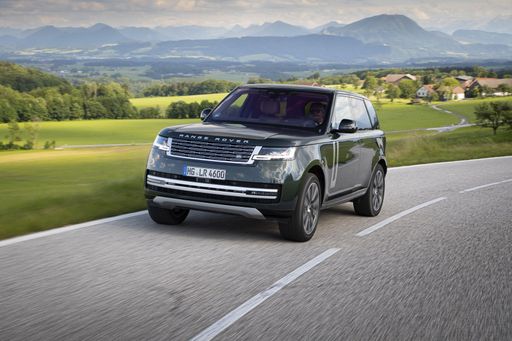
Land Rover Range Rover
Fiat Panda
The Fiat Panda is a compact city car that brilliantly combines practical design and efficient functionality. Its boxy shape provides ample interior space and visibility, making it a favourite among urban drivers. With its reputation for reliability and affordability, the Panda continues to be a top choice for those seeking a no-frills, dependable vehicle.
details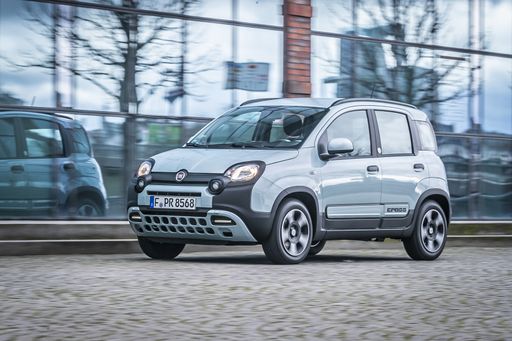 @ media.stellantis.com
@ media.stellantis.com
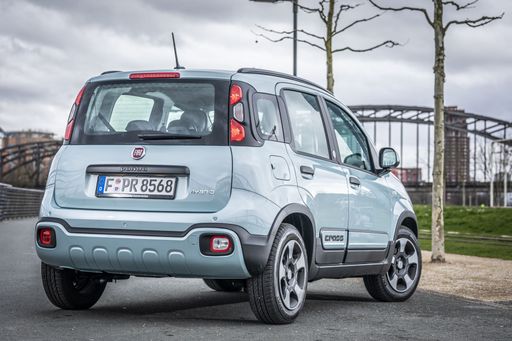 @ media.stellantis.com
@ media.stellantis.com
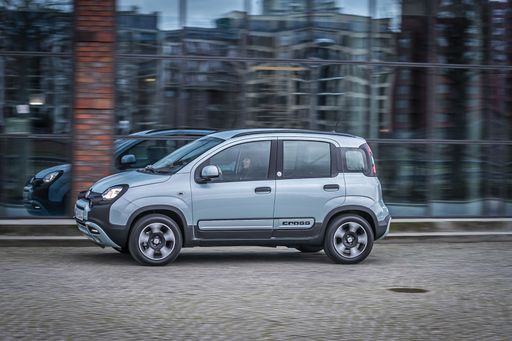 @ media.stellantis.com
@ media.stellantis.com
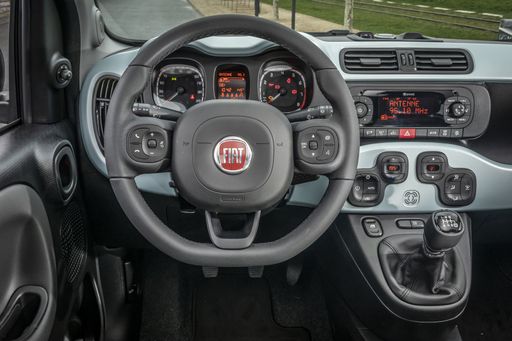 @ media.stellantis.com
@ media.stellantis.com
Land Rover Range Rover
The Land Rover Range Rover epitomises luxury and capability in the realms of off-road vehicles. Its elegant design seamlessly marries sophistication with ruggedness, making it equally suitable for urban environments and challenging terrains. Inside, passengers are treated to a plush interior with premium materials and cutting-edge technology that ensure a comfortable and connected driving experience.
details @ media.landrover.com
@ media.landrover.com
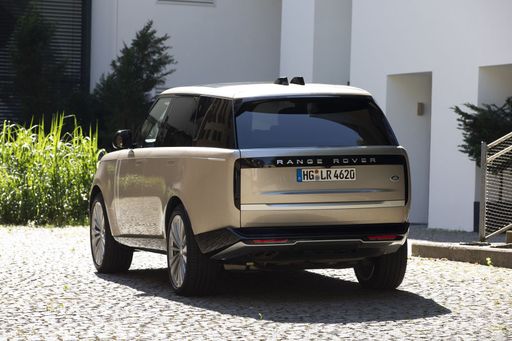 @ media.landrover.com
@ media.landrover.com
 @ media.landrover.com
@ media.landrover.com
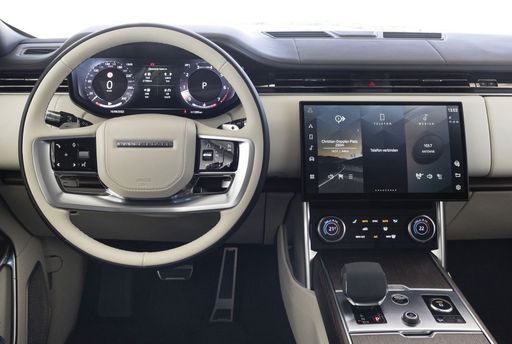 @ media.landrover.com
@ media.landrover.com

|

|
|
|
|
Costs and Consumption |
|
|---|---|
|
Price
14100 £
|
Price
122700 - 244700 £
|
|
Consumption L/100km
5 L
|
Consumption L/100km
2.7 - 11.7 L
|
|
Consumption kWh/100km
-
|
Consumption kWh/100km
-
|
|
Electric Range
-
|
Electric Range
116 - 117 km
|
|
Battery Capacity
-
|
Battery Capacity
31.80 kWh
|
|
co2
113 g/km
|
co2
62 - 265 g/km
|
|
Fuel tank capacity
38 L
|
Fuel tank capacity
71 - 90 L
|
Dimensions and Body |
|
|---|---|
|
Body Type
Hatchback
|
Body Type
Off-Roader
|
|
Seats
4
|
Seats
5 - 7
|
|
Doors
5
|
Doors
5
|
|
Curb weight
1055 kg
|
Curb weight
2504 - 2810 kg
|
|
Trunk capacity
225 L
|
Trunk capacity
212 - 818 L
|
|
Length
3635 mm
|
Length
5052 - 5258 mm
|
|
Width
1643 mm
|
Width
2047 mm
|
|
Height
1551 mm
|
Height
1870 mm
|
|
Max trunk capacity
870 L
|
Max trunk capacity
1841 - 2176 L
|
|
Payload
365 kg
|
Payload
589 - 846 kg
|
Engine and Performance |
|
|---|---|
|
Engine Type
Petrol MHEV
|
Engine Type
Plugin Hybrid, Petrol MHEV, Diesel MHEV
|
|
Transmission
Manuel
|
Transmission
Automatic
|
|
Transmission Detail
Manual Gearbox
|
Transmission Detail
Automatic Gearbox
|
|
Drive Type
Front-Wheel Drive
|
Drive Type
All-Wheel Drive
|
|
Power HP
70 HP
|
Power HP
300 - 615 HP
|
|
Acceleration 0-100km/h
13.90 s
|
Acceleration 0-100km/h
4.5 - 6.6 s
|
|
Max Speed
164 km/h
|
Max Speed
218 - 261 km/h
|
|
Torque
92 Nm
|
Torque
650 - 800 Nm
|
|
Number of Cylinders
3
|
Number of Cylinders
6 - 8
|
|
Power kW
51 kW
|
Power kW
221 - 452 kW
|
|
Engine capacity
999 cm3
|
Engine capacity
2997 - 4395 cm3
|
General |
|
|---|---|
|
Model Year
2024
|
Model Year
2025
|
|
CO2 Efficiency Class
C
|
CO2 Efficiency Class
B, G
|
|
Brand
Fiat
|
Brand
Land Rover
|
Is the Fiat Panda offered with different drivetrains?
Available configurations include Front-Wheel Drive.
The prices and data displayed are estimates based on German list prices and may vary by country. This information is not legally binding.
